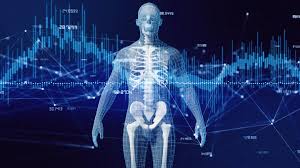
Breaking News
We Americans Need to Dig Deep into Historical Perspective
 A timeless clip of Michael Burry explaining how he used credit default swaps...
A timeless clip of Michael Burry explaining how he used credit default swaps...
 The next financial crisis won't start in a bank lobby. It's already brewing in the market
The next financial crisis won't start in a bank lobby. It's already brewing in the market
Top Tech News
 This tiny dev board is packed with features for ambitious makers
This tiny dev board is packed with features for ambitious makers
 Scientists Discover Gel to Regrow Tooth Enamel
Scientists Discover Gel to Regrow Tooth Enamel
 Vitamin C and Dandelion Root Killing Cancer Cells -- as Former CDC Director Calls for COVID-19...
Vitamin C and Dandelion Root Killing Cancer Cells -- as Former CDC Director Calls for COVID-19...
 Galactic Brain: US firm plans space-based data centers, power grid to challenge China
Galactic Brain: US firm plans space-based data centers, power grid to challenge China
 A microbial cleanup for glyphosate just earned a patent. Here's why that matters
A microbial cleanup for glyphosate just earned a patent. Here's why that matters
 Japan Breaks Internet Speed Record with 5 Million Times Faster Data Transfer
Japan Breaks Internet Speed Record with 5 Million Times Faster Data Transfer
 Advanced Propulsion Resources Part 1 of 2
Advanced Propulsion Resources Part 1 of 2
 PulsarFusion a forward-thinking UK aerospace company, is pushing the boundaries of space travel...
PulsarFusion a forward-thinking UK aerospace company, is pushing the boundaries of space travel...
 Dinky little laser box throws big-screen entertainment from inches away
Dinky little laser box throws big-screen entertainment from inches away
 'World's first' sodium-ion flashlight shines bright even at -40 ºF
'World's first' sodium-ion flashlight shines bright even at -40 ºF
Vibrations Can Stimulate Bone Growth: Study Paves the Way for Developing New Therapies

It addresses an interesting paradox: bones become denser when subjected to mechanical force and load—which is true even for broken bones—which can't be subjected to mechanical force or load.
The study looked to see if, by examining genetic expression during a vibrational therapy on bones, it could be possible to replicate these laborious, healing forces in patients who can't perform activities like weightlifting.
There's an old saying in medicine which goes "break your hip, die of pneumonia." While these two diseases might seem to have nothing in common, they're a duo responsible for a large number of deaths among the elderly in society.
Bone density dramatically declines as we age, and is accelerated among those who don't perform resistance exercise, strength training, or weightlifting.
"Ideally, we need new therapeutic approaches to delaying the breakdown of bone in old age," said Neashan Mathavan, a researcher at the Department of Health Sciences at the Technical University of Switzerland (ETH).
Mathavan is a lead author on a new study that looked to see if bones fractured by old age could be thickened with a unique "vibration therapy" by exploiting the genetics of bone growth and repair.
Bone does not just grow in any which way—rather, the bone cells respond to external forces. If bones are subjected to targeted mechanical loading as they heal following a fracture, they can potentially become larger, denser and more stable than they were before the fracture occurred.
While this was demonstrated in mice, the mechanism that drives this effect isn't understood.
"Only if we understand these mechanisms can we use them as the basis for developing new therapies," Mathavan told the university press.
Working alongside Ralph Müller, whose trials with the mice set the board for this new research, Mathavan sought to precisely map out gene activity in mice receiving this vibrational therapy for a broken leg.
"For each point in the bone, we now know what mechanical conditions exist there, where bone is being formed and where bone is being broken down," explains ETH professor Müller.
Among the findings were locations where genes that drive bone mineralization and collagenous bone matrix formation became active, but also, and perhaps more critically, where in the bone were genes that inhibit the growth of bone activated.

 The AI money machine!
The AI money machine!

